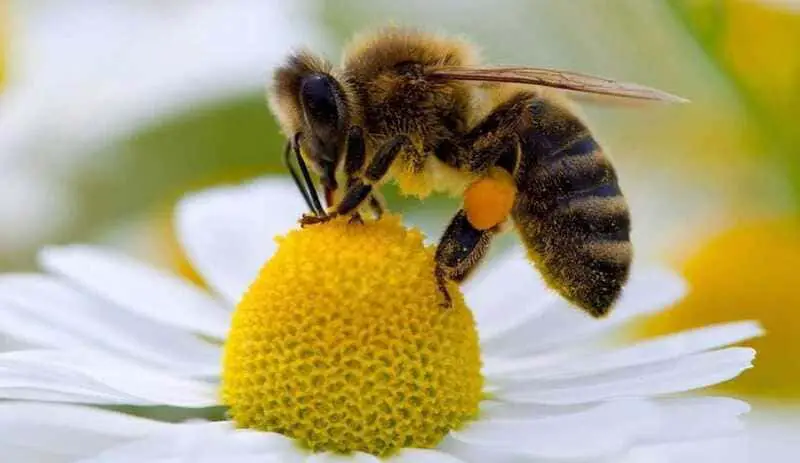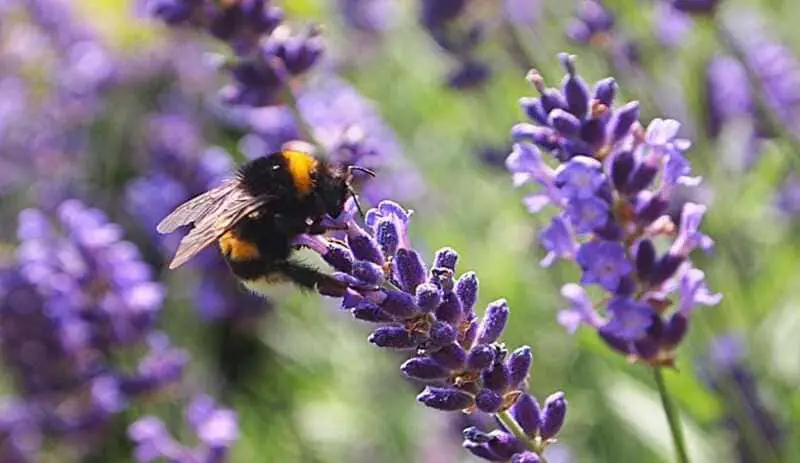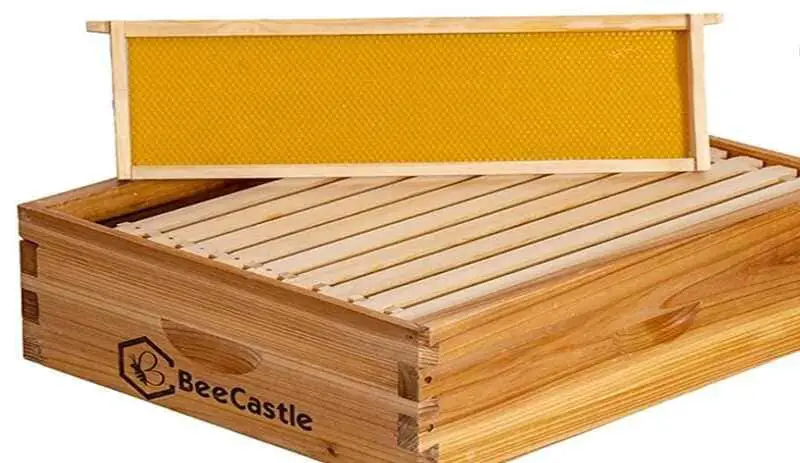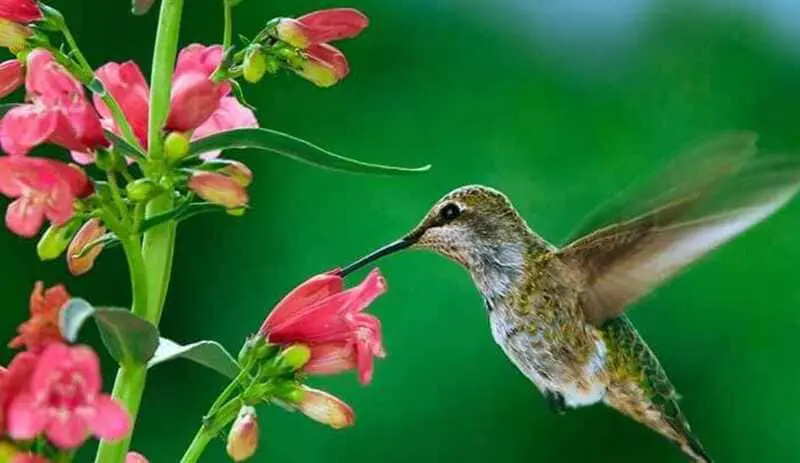Pollinating insects play a vital role in plant reproduction, and their presence in the garden can have a significant impact on plant health and growth. However, currently, pollinating insects are facing a decline in their populations due to the degradation of their natural habitats and pesticide use.
Fortunately, there are measures that can be taken to attract these important insects to our garden and help protect their populations. In this article, we will explore how to attract pollinating insects to your garden and create a healthy habitat for them.

We will discuss everything from selecting appropriate plants to creating a natural and sustainable habitat for pollinators to thrive, and how we can help promote their diversity and conservation. Keep reading to discover how you can turn your garden into a paradise for pollinating insects.
The Importance of Pollinating Insects in the Garden and Nature
Pollinating insects are essential creatures in nature, and how to attract pollinating insects to your garden can make a difference in the success of the reproduction of many plants. However, the decline in populations of these insects is a major concern for the health of nature and food production worldwide. The good news is that there are things that can be done to help attract pollinating insects to your garden and contribute to their preservation.
Pollinators such as bees, butterflies, flies, and beetles are responsible for transferring pollen from flowers to other flowers, allowing fertilization and the production of fruits and seeds. This process of pollination is essential to maintain diversity and food production in nature. In addition, pollinating insects also play an important role in the reproduction of plants that provide food and shelter to other animals in the food chain.
However, the loss of natural habitats, the use of pesticides, and other factors are reducing pollinating insect populations. As a result, it is important to take measures to help protect and encourage the presence of these important insects in our environment.
One way to do this is by selecting appropriate plants to attract pollinators to your garden. Plants that produce bright and fragrant flowers, such as lavender, sunflowers, and daisies, are especially attractive to pollinators. Another way is by creating a suitable habitat for them, which includes selecting natural habitats, installing sources of water, and eliminating pesticides and other toxic chemicals from the garden.
How to identify and distinguish different types of pollinating insects.
Pollinating insects are a vital part of the ecosystem, and recognizing the different types of these small creatures can be very useful for gardeners and nature lovers. Additionally, knowing how to identify the different types of pollinators can help in attracting them to your garden to ensure effective pollination and healthy production of fruits and vegetables.
There are many types of pollinating insects, including bees, butterflies, beetles, flies, wasps, and hummingbirds. Each of them has a different shape and size, so it’s important to pay attention to the details to be able to distinguish them.
Bees are easily recognizable by their dense fur and round, hairy bodies. Butterflies, on the other hand, have colorful wings and often have distinctive patterns that vary by species. Beetles have hard bodies and often have bright colors, while flies are smaller and have transparent wings. Wasps have a thin, long body, while hummingbirds are small birds with fast wings that can look like insects at first glance.
Attracting different types of pollinating insects to your garden is easy if you select the right plants. For example, bees are especially attracted to the flowers of lavender, rosemary, and sage, while butterflies prefer brightly colored and fragrant flowers such as marigold and verbena. The flowers of mint and wild carrot are very popular among pollinating flies, while beetles prefer large, colorful flowers such as roses and sunflowers.
Plants that attract pollinators and how to select them for your garden.
Plants are a fundamental part of the ecosystem and, as such, attract a wide variety of animals, including pollinator insects such as bees, butterflies, hummingbirds, and many others. If you want to attract these important pollinators to your garden, you need to select the right plants.

Plants that attract pollinators often have colorful and fragrant flowers. Bright colors like red, yellow, and orange are particularly attractive to bees and hummingbirds, while butterflies prefer pastel-colored flowers like pink, lilac, and blue. Plants with open and easily accessible flower shapes, such as daisies and roses, are also very popular among pollinators.
In addition to selecting the right plants, it is important to consider the time of year they bloom. Pollinators need food all year round, so it is necessary to have a selection of plants that bloom in different seasons. For example, spring plants like bulbs and fruit trees are important for pollinators that emerge after winter, while autumn plants like asters and marigolds are essential for providing food before winter.
Another factor to consider is the location of your garden. If you have a sunny garden, plants that need lots of light, such as daisies and sunflowers, are a good choice. If your garden is in a shaded area, you can select plants that are adapted to those conditions, such as begonias or ferns.
How to create a suitable habitat for pollinators in your garden.
If you want to attract pollinators to your garden, it’s important to create a suitable habitat for them. This means providing an environment that is as similar as possible to their natural habitat. One way to do this is by selecting natural habitats that resemble those that pollinators find in nature.
For example, if you want to attract bees, you can place nesting boxes that offer them a safe place to live. Bee nests can be constructed from materials such as wood or bamboo and placed in sheltered locations away from the sun and rain.

Another important element to consider is the supply of water. Pollinators need water to survive, and if they don’t have access to it, they may stay away from your garden. To solve this, you can place a water feeder or a small pool in your garden where pollinators can drink and cool off.
It’s also important to protect pollinators from pesticides. Pesticides can be very harmful to pollinators and reduce their population. If it’s necessary to use pesticides in your garden, make sure to use organic products and apply them when pollinators are less active.
In addition, you can create a habitat that is safe and welcoming for pollinators by planting in groups and in a variety of heights and textures. Native plants are especially important as they are adapted to the climate and insects in your area. It’s also important not to over-prune your plants as pollinators often use leaves and branches as shelter.
The role of colors and fragrances is essential in attracting pollinators.
Pollinators, such as bees, butterflies, and hummingbirds, specifically look for certain colors and scents to identify and locate the plants that provide them with the nectar and pollen they need to survive.
Flowers are the main way plants attract pollinators, and they have a wide variety of colors and fragrances to attract different types of pollinators. For example, brightly colored red flowers with pleasant aromas are attractive to hummingbirds, while yellow or light blue flowers are preferred by bees.

Plants can also emit different fragrances at different times of the day to attract different pollinators. Some plants release their fragrances at night to attract nocturnal pollinators, while others do so during the day to attract diurnal pollinators.
Additionally, the position and shape of the flower can also influence the attraction of pollinators. For example, tubular flowers, such as those of the lily of the valley, are ideal for hummingbirds as they allow easy access to the nectar.
Sustainable gardening methods that encourage the presence of pollinators in the garden.
Sustainable gardening is a practice that focuses on protecting the environment and promoting biodiversity, and it can help to encourage the presence of pollinators in the garden. Here are some sustainable gardening methods you can apply in your garden to achieve this.
Firstly, choose native plants instead of exotic species, as native plants are more likely to attract local pollinators. Native plants are also more resistant to pests and diseases, which means you’ll need fewer pesticides and other harmful chemicals to keep them healthy.
Another method is to grow organic plants without the use of chemical pesticides and herbicides, which can be toxic to pollinators and other beneficial insects. Instead, use natural pest control methods such as crop rotation, introducing natural predators, and applying organic compost and fertilizer.
Additionally, consider creating refuge areas for pollinators in your garden. This may include creating uncut grass zones, including water areas for insects to drink, and placing nesting boxes for bees and butterflies.
Finally, try to minimize the use of tools and machinery in your garden as they can damage the habitat of pollinators. Instead, opt for more sustainable gardening methods such as manual pruning and using hand tools instead of machinery.
How to maintain a healthy garden for pollinators throughout the year.
To maintain a healthy garden for pollinators throughout the year, it is important to consider seasonal changes and adapt your gardening practices accordingly.
In the spring, make sure to plant a variety of early flowers to attract pollinators that emerge after winter. Bees and butterflies need early-season nectar and pollen to recover and start building their colonies.
In the summer, make sure to keep your garden well-watered and shaded, as extreme heat can be harmful to pollinators. Provide a source of water, such as a fountain or pond, so that pollinators can drink and cool off.
In the fall, leave some withered plants and twigs in your garden, as many pollinator species rely on them to overwinter. These plants and twigs also provide shelter and hiding places for pollinators during the cold months.
In the winter, don’t rush to prune or clean up your garden, as this can eliminate overwintering habitats for pollinators. Instead, consider leaving some areas untrimmed or unpruned until spring, so that pollinators have a place to take shelter during the cold months.
In addition, make sure to keep your garden free of pesticides and other harmful chemicals that can be toxic to pollinators. Instead, use natural and organic pest control methods, such as the use of insect-repellent plants, the introduction of natural predators, and crop rotation.
